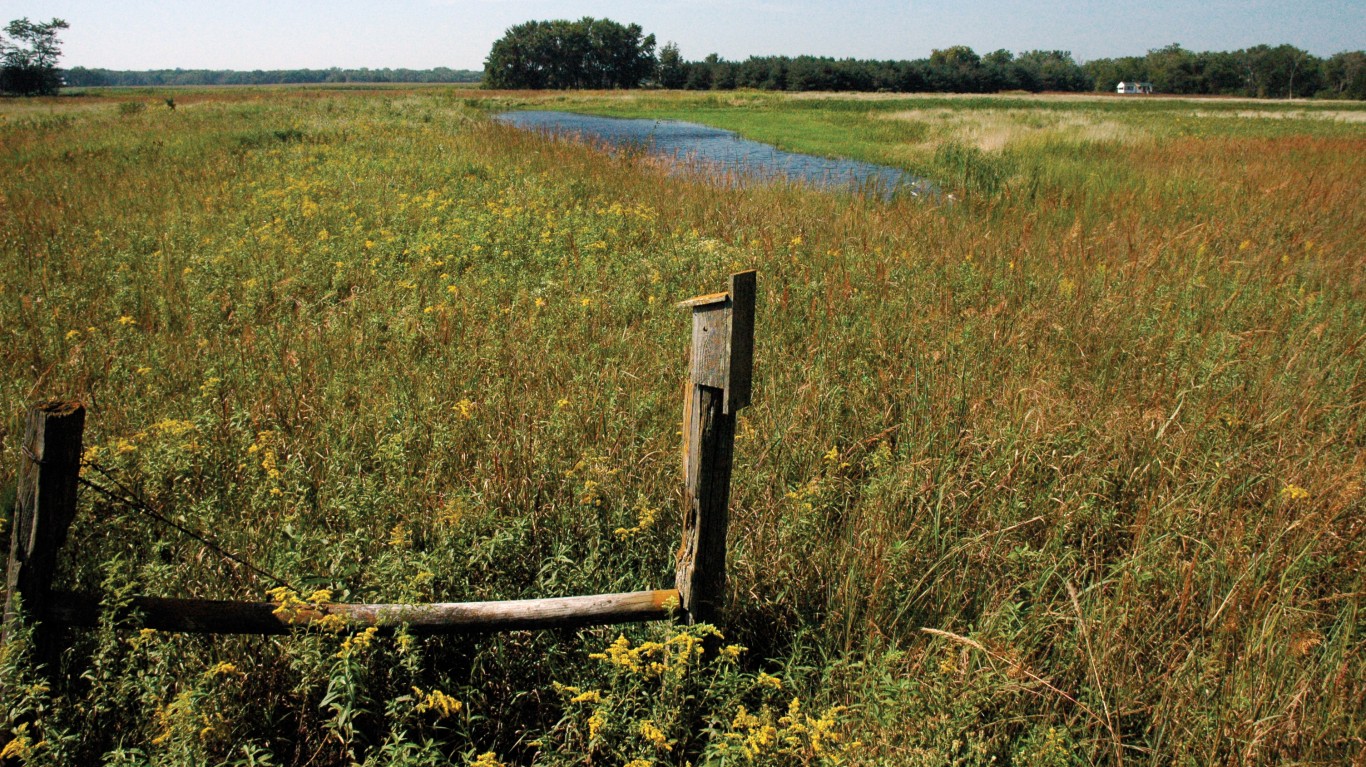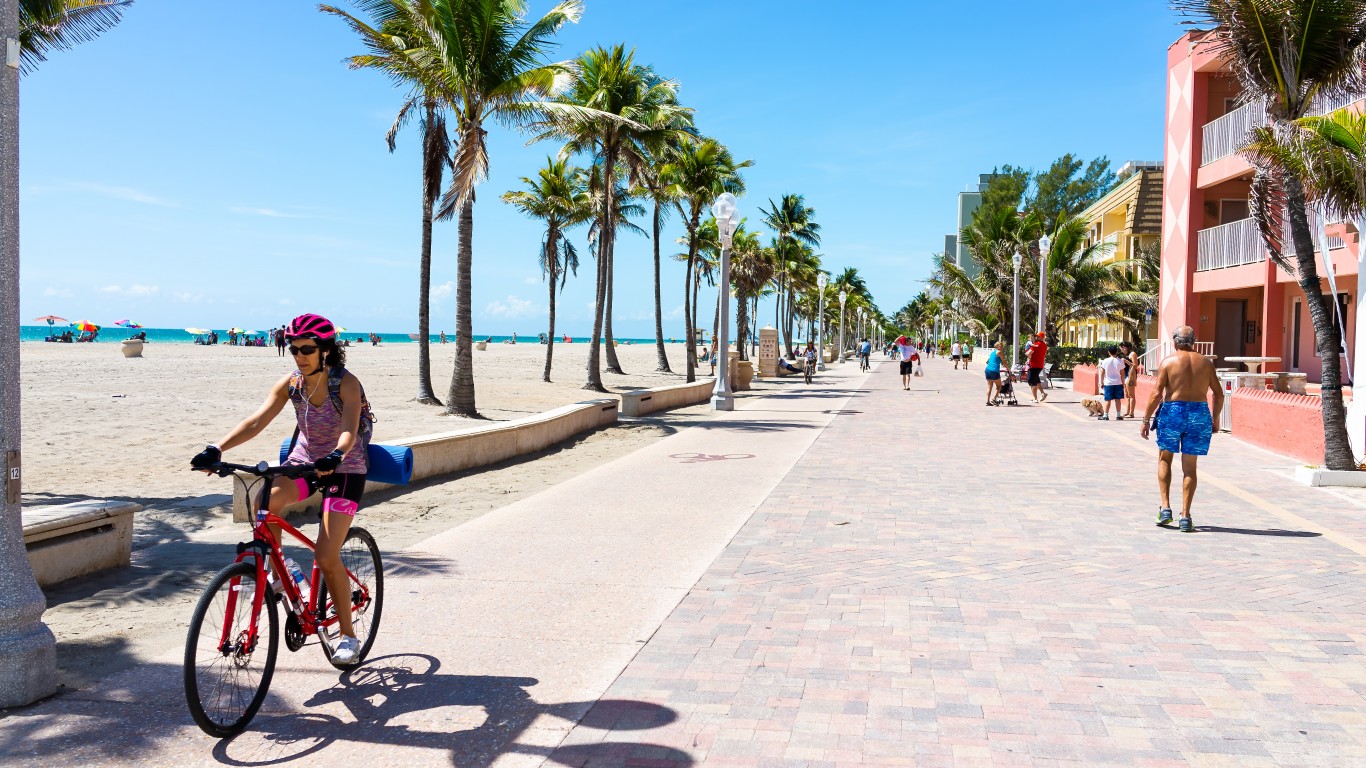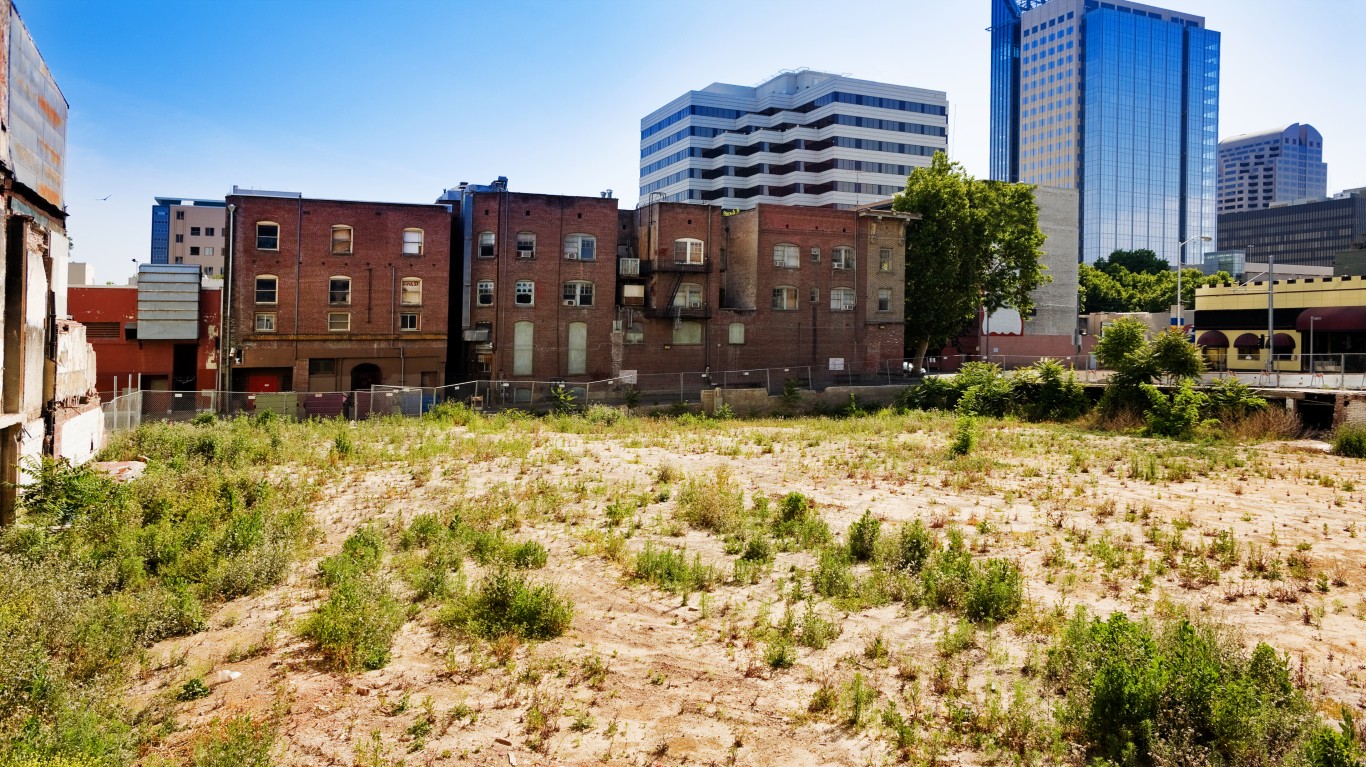
The U.S. Department of Health and Human Services currently defines the federal poverty line at $12,880 for individuals, $26,500 for families of four in the continental U.S. (the rates are slightly higher for Alaska and Hawaii). Those figures, of course, are far below the income a family really needs to avoid poverty in every state.
Hardly surprisingly, considering the financial strains caused by the pandemic, the poverty level in this country is rising. Between June and November of last year, the overall percentage of Americans living below the poverty line rose from 9.3% to 11.7% — the highest single-year increase since 1960, when the government started tracking such things. (This information came to light in to a report released in December by financial experts at the University of Notre Dame, the University of Chicago, and China’s Zhejiang University.)
The poverty rate for certain groups — those without a college degree, African-Americans, and children under the age of 17 — was even higher. (About 2.3 million children fell into poverty between June and November. You may be distressed to learn how many children live in poverty in your state.)
In addition, the numbers in individual cities and towns can soar much higher than the national averages. The sole Western representative in a list of the ten poorest big cities in the country, Los Angeles, records a rate of 16.7%. But as is the case elsewhere in the country, the poorest places are mostly small towns, localities like Madrone, N.M. (pop. 590), and Whitecone, Ariz. (pop. 871). In places like these, the poverty rate can be shocking, reaching as high as 81.8% in the most extreme case.
Click here to see the poorest places in the West.
Arizona fares worst on this list, as home to ten of the 25 poorest places in the region. New Mexico comes next with seven, followed by California with six. Alaska and Hawaii account for one apiece. All these states have wealthy communities, too, of course, but too many parts of the region are economically depressed, especially in areas with significant Latino, African-American, and Native American and other indigenous populations.
Federal stimulus efforts might well help such places, but they will doubtless remain among the country’s most economically vulnerable locations.
To identify the poorest places in the West, 24/7 Wall St. reviewed the poverty rate — the percentage of all people who live in poverty — in the approximately 20,000 places with 500 or more residents using data from the U.S. Census Bureau’s 2019 American Community Survey.
The areas reviewed include cities, towns, as well as unincorporated areas known as Census Designated Places, or CDPs. These are the 50 places with the highest poverty rates. Each area’s median household income and population totals also came from the ACS. All data are 5-year averages through 2019, and do not reflect impacts associated with the COVID-19 pandemic. We only considered places where less than 25% of the population are enrolled in college or graduate school.
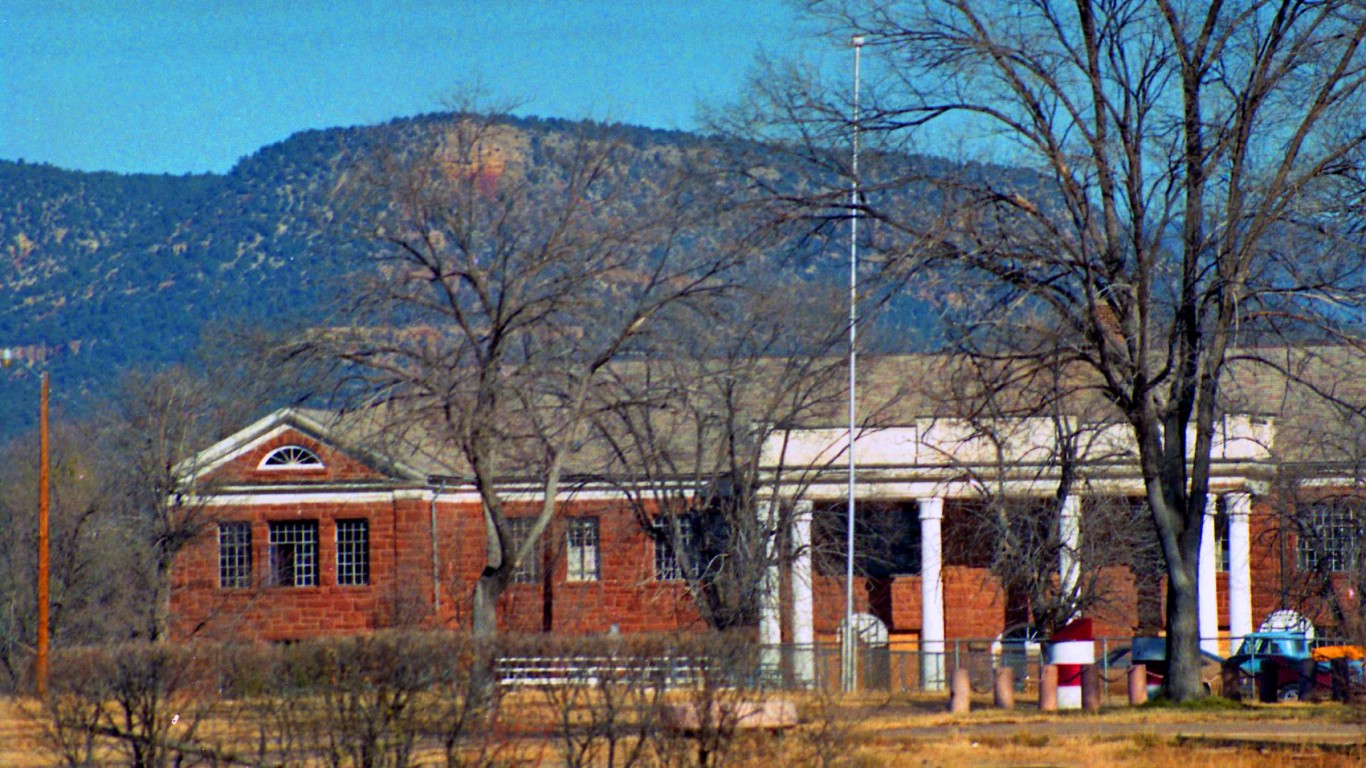
25. Sawmill, Arizona
> Poverty rate in 2019: 54.3% — #441 out of 29,320 places
> Median household income in 2019: $18,333 — #26,966 out of 29,320 places
> Adults with a bachelor’s degree in 2019: 2.8% — #27,246 out of 29,320 places
> Total adult population in 2019: 775
[in-text-ad]
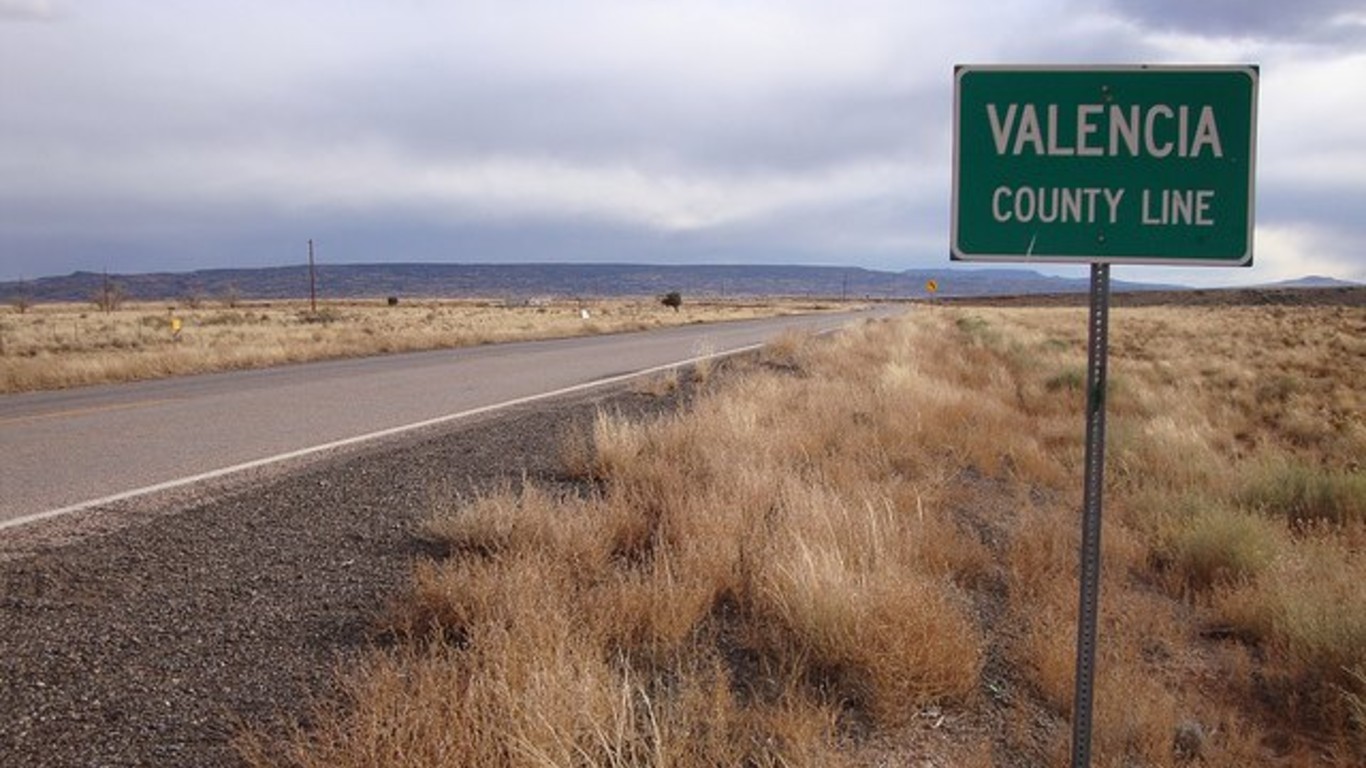
24. Madrone, New Mexico
> Poverty rate in 2019: 54.6% — #430 out of 29,320 places
> Median household income in 2019: $20,813 — #26,812 out of 29,320 places
> Adults with a bachelor’s degree in 2019: 4.4% — #26,565 out of 29,320 places
> Total adult population in 2019: 590
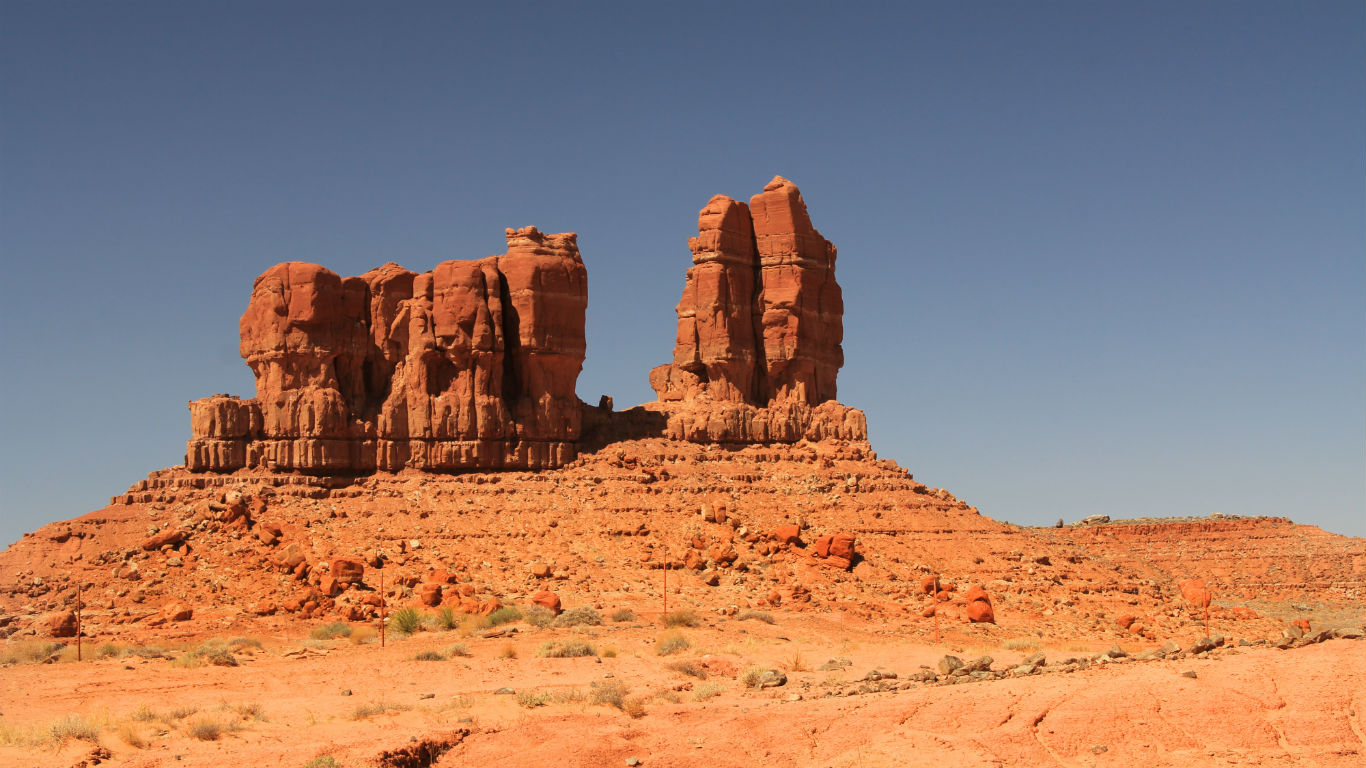
23. Chilchinbito, Arizona
> Poverty rate in 2019: 54.6% — #430 out of 29,320 places
> Median household income in 2019: $18,194 — #26,973 out of 29,320 places
> Adults with a bachelor’s degree in 2019: 2.9% — #27,204 out of 29,320 places
> Total adult population in 2019: 926
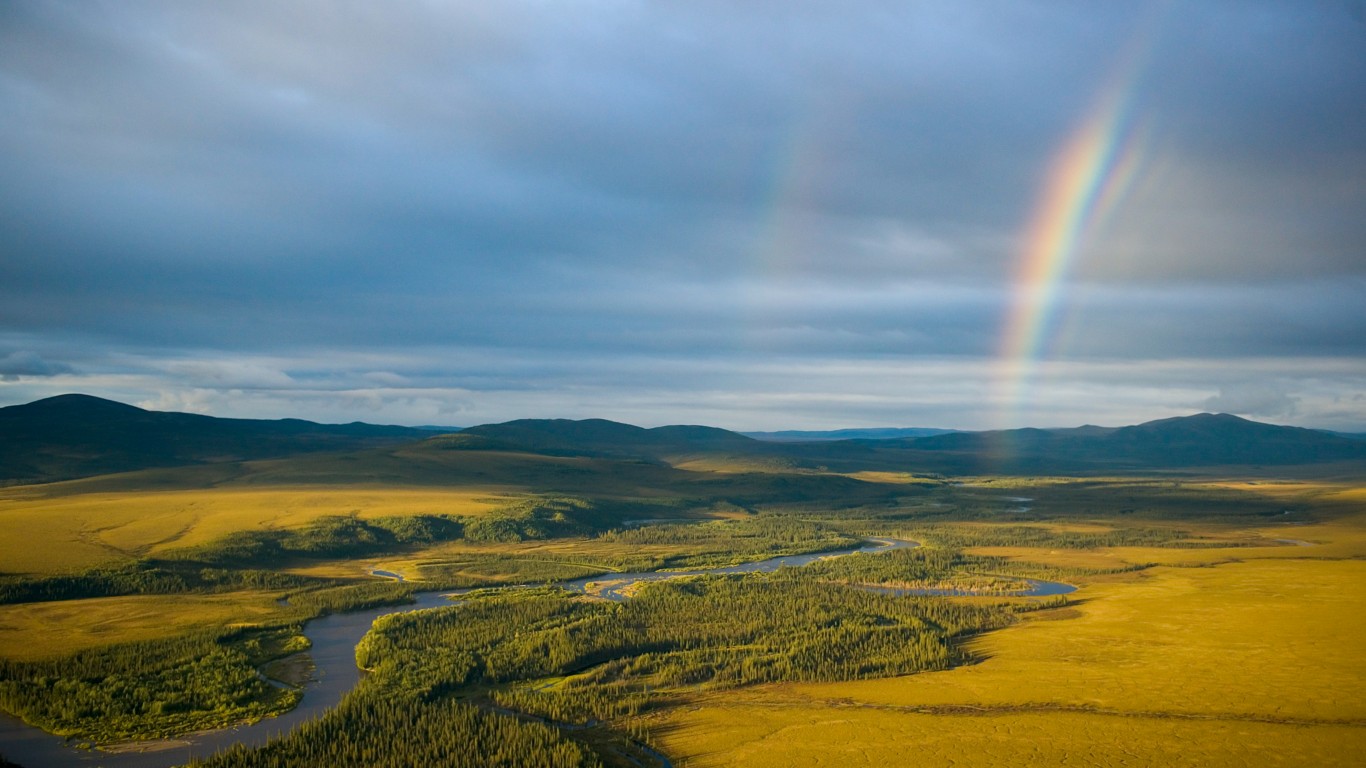
22. Selawik, Alaska
> Poverty rate in 2019: 54.8% — #426 out of 29,320 places
> Median household income in 2019: $31,250 — #24,730 out of 29,320 places
> Adults with a bachelor’s degree in 2019: 2.9% — #27,204 out of 29,320 places
> Total adult population in 2019: 792
[in-text-ad-2]
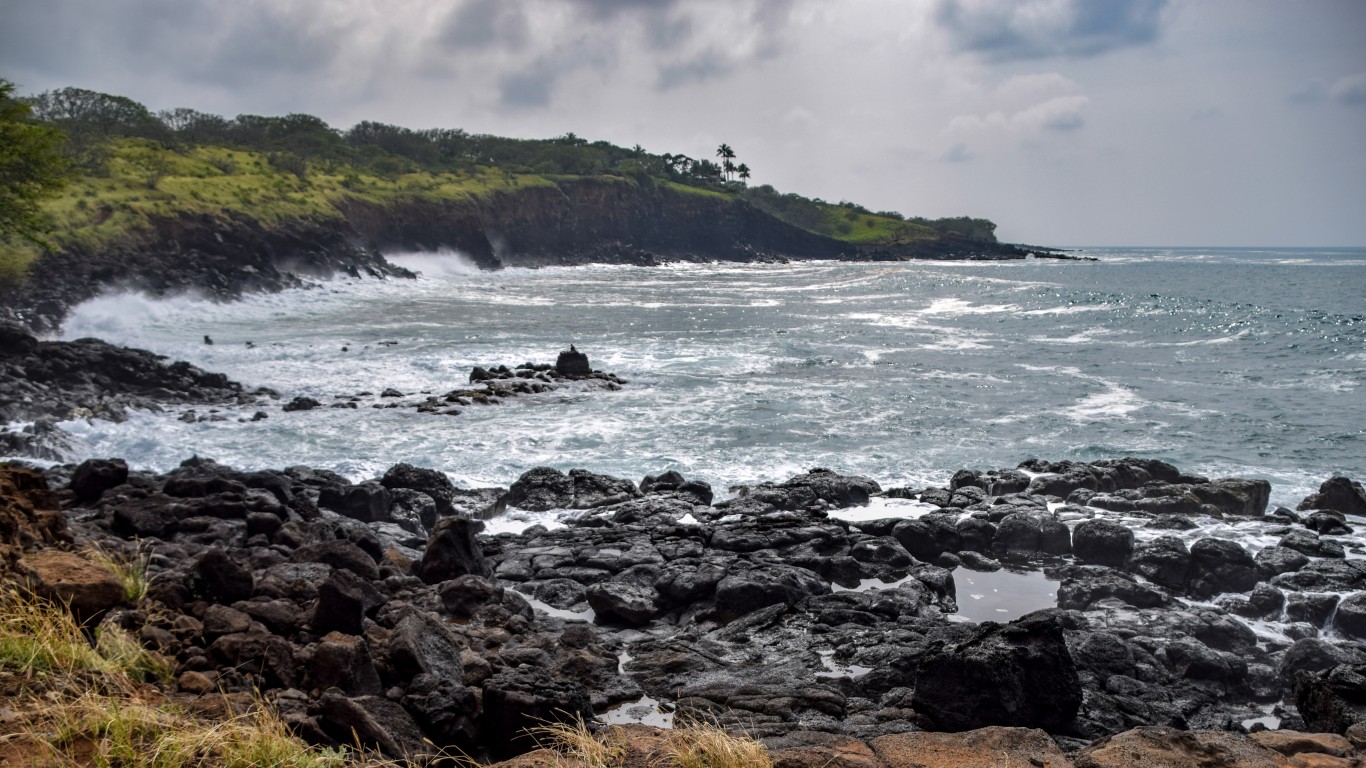
21. Hawaiian Ocean View, Hawaii
> Poverty rate in 2019: 55.2% — #415 out of 29,320 places
> Median household income in 2019: $15,654 — #27,062 out of 29,320 places
> Adults with a bachelor’s degree in 2019: 14.7% — #17,727 out of 29,320 places
> Total adult population in 2019: 5,011
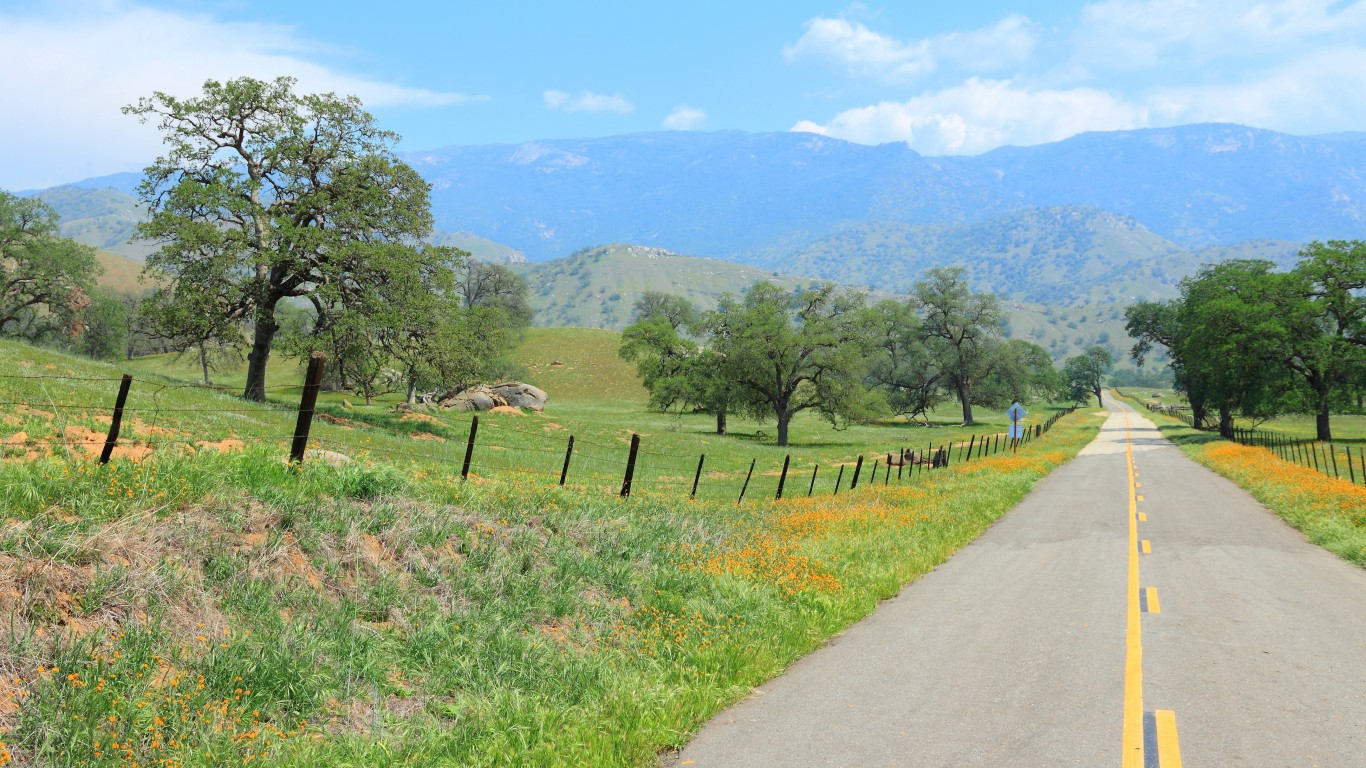
20. Richgrove, California
> Poverty rate in 2019: 55.4% — #411 out of 29,320 places
> Median household income in 2019: $20,962 — #26,795 out of 29,320 places
> Adults with a bachelor’s degree in 2019: 1.5% — #27,613 out of 29,320 places
> Total adult population in 2019: 2,316
[in-text-ad]
19. Cedar Creek, Arizona
> Poverty rate in 2019: 56.9% — #378 out of 29,320 places
> Median household income in 2019: $32,222 — #24,325 out of 29,320 places
> Adults with a bachelor’s degree in 2019: 0.0% — #27,746 out of 29,320 places
> Total adult population in 2019: 517

18. Casa Blanca, Arizona
> Poverty rate in 2019: 56.9% — #378 out of 29,320 places
> Median household income in 2019: $14,896 — #27,079 out of 29,320 places
> Adults with a bachelor’s degree in 2019: 5.4% — #26,083 out of 29,320 places
> Total adult population in 2019: 1,004
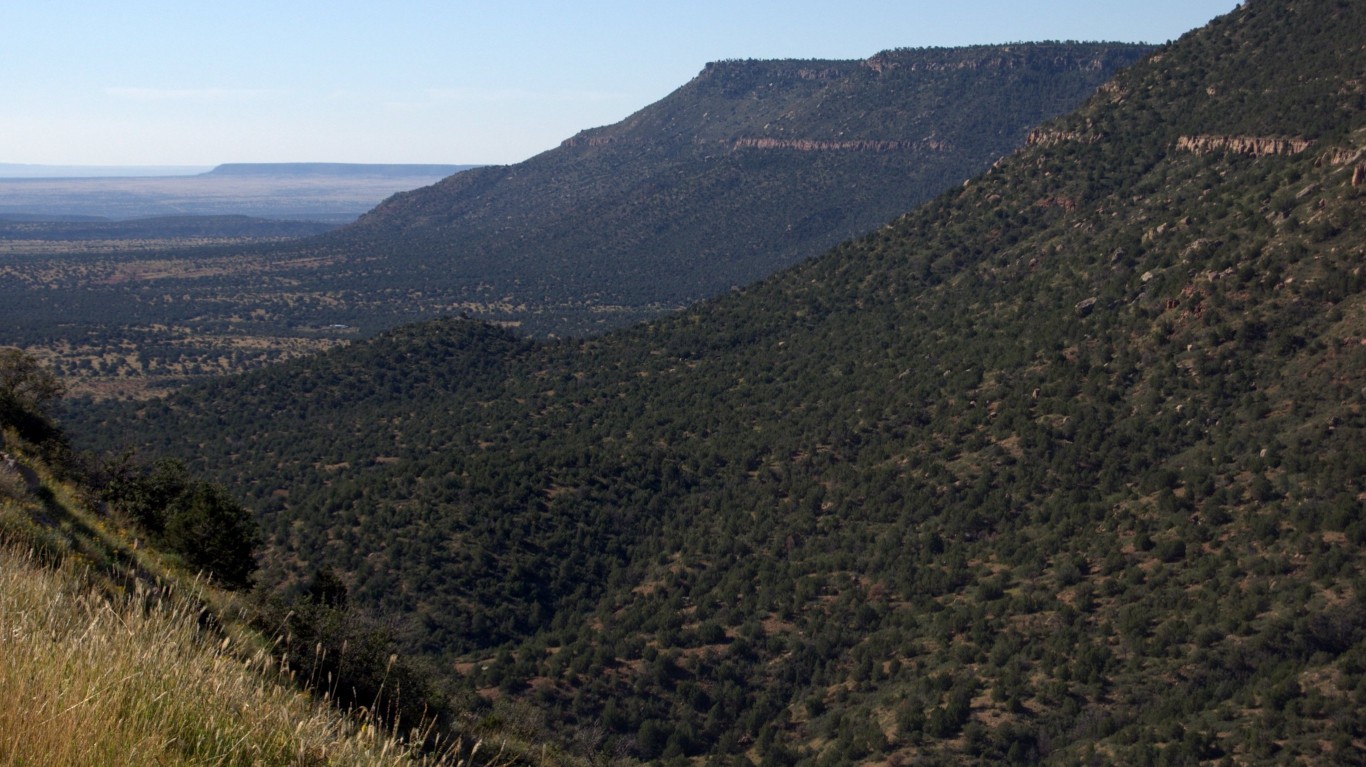
17. Canyon Day, Arizona
> Poverty rate in 2019: 57.7% — #363 out of 29,320 places
> Median household income in 2019: $29,042 — #25,428 out of 29,320 places
> Adults with a bachelor’s degree in 2019: 6.5% — #25,388 out of 29,320 places
> Total adult population in 2019: 1,629
[in-text-ad-2]
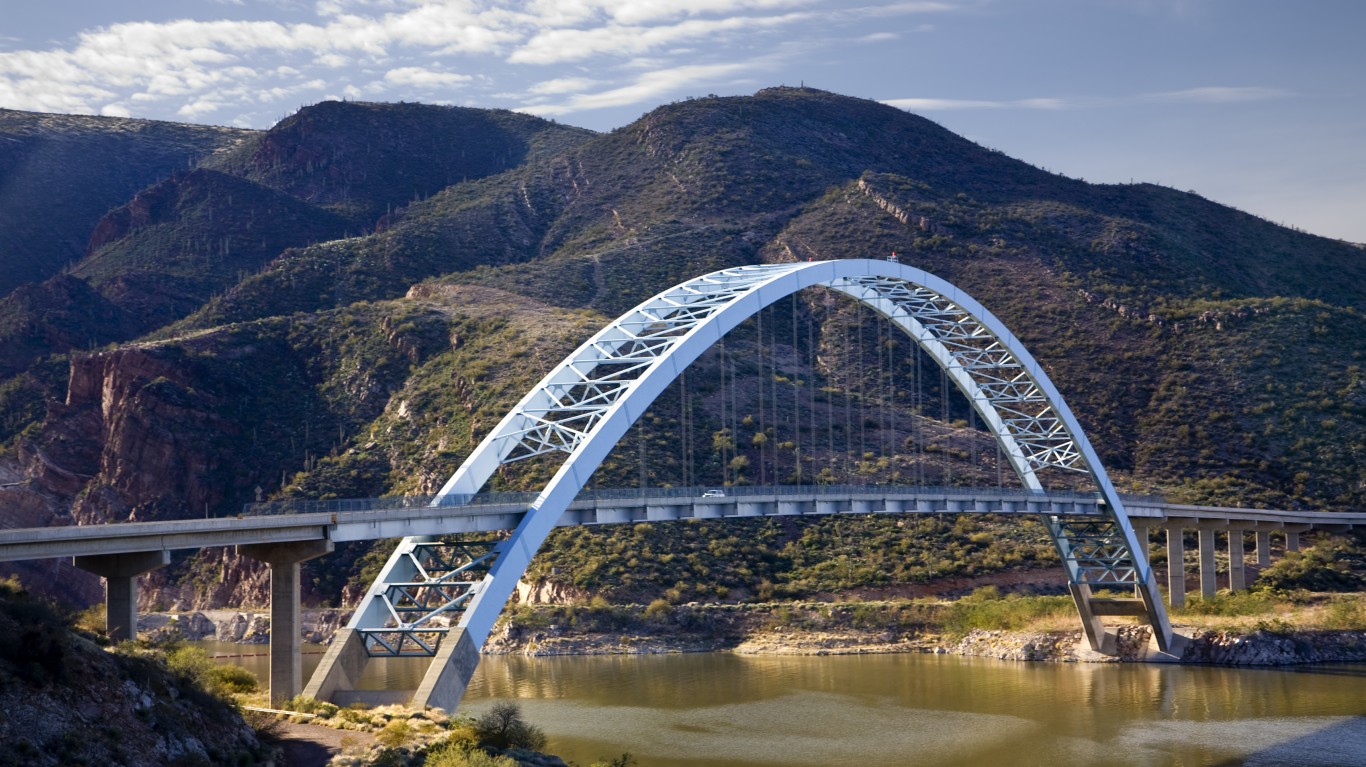
16. San Carlos, Arizona
> Poverty rate in 2019: 58.2% — #347 out of 29,320 places
> Median household income in 2019: $23,750 — #26,486 out of 29,320 places
> Adults with a bachelor’s degree in 2019: 6.9% — #25,114 out of 29,320 places
> Total adult population in 2019: 4,451
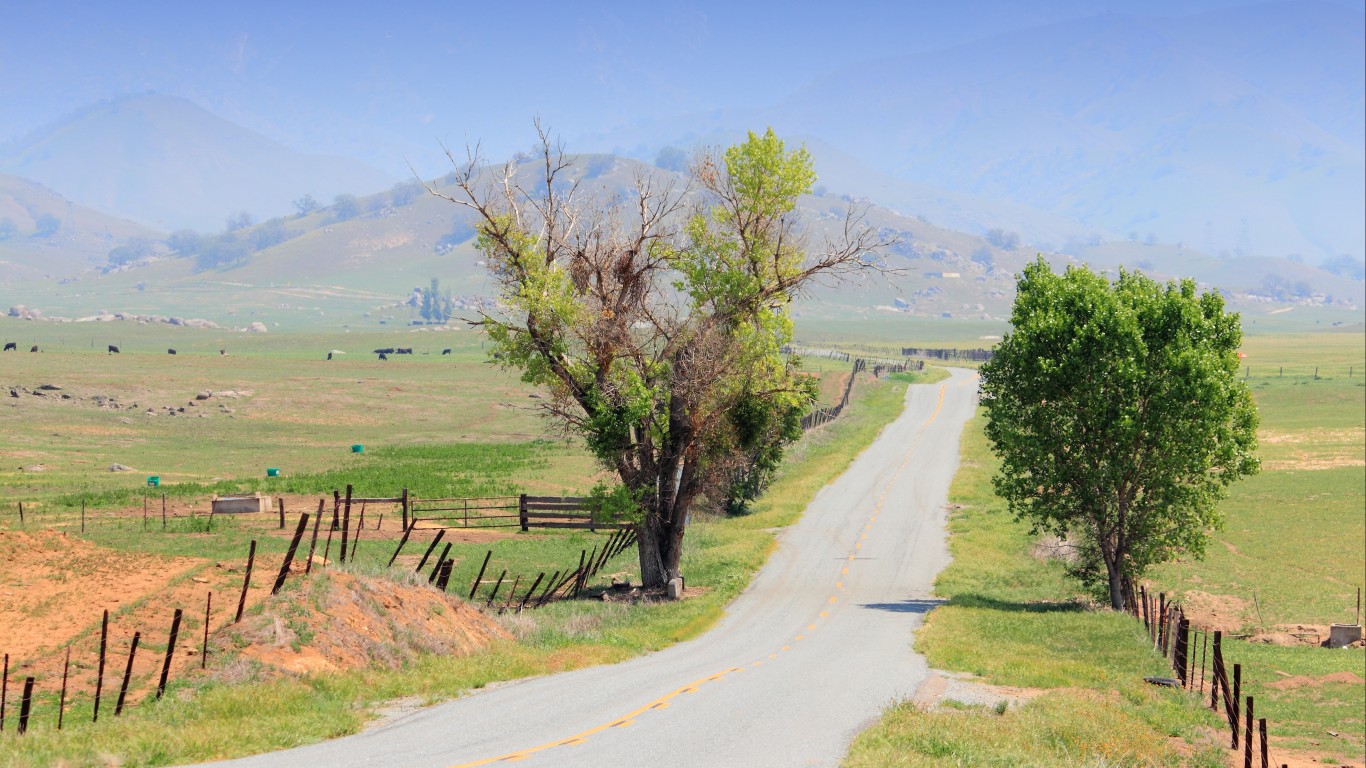
15. Linnell Camp, California
> Poverty rate in 2019: 58.6% — #337 out of 29,320 places
> Median household income in 2019: $19,670 — #26,890 out of 29,320 places
> Adults with a bachelor’s degree in 2019: 0.0% — #27,746 out of 29,320 places
> Total adult population in 2019: 928
[in-text-ad]
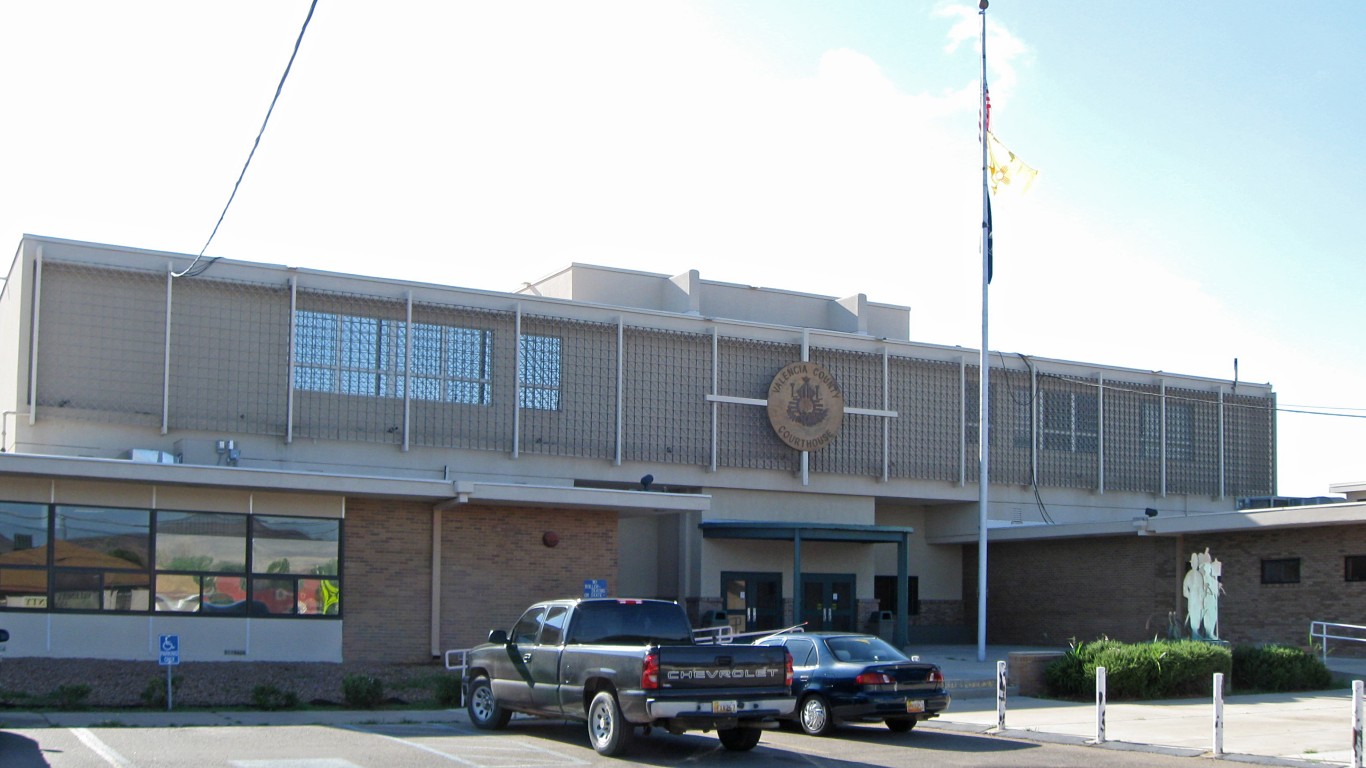
14. Monterey Park, New Mexico
> Poverty rate in 2019: 59.0% — #331 out of 29,320 places
> Median household income in 2019: $19,879 — #26,875 out of 29,320 places
> Adults with a bachelor’s degree in 2019: 0.0% — #27,746 out of 29,320 places
> Total adult population in 2019: 1,600
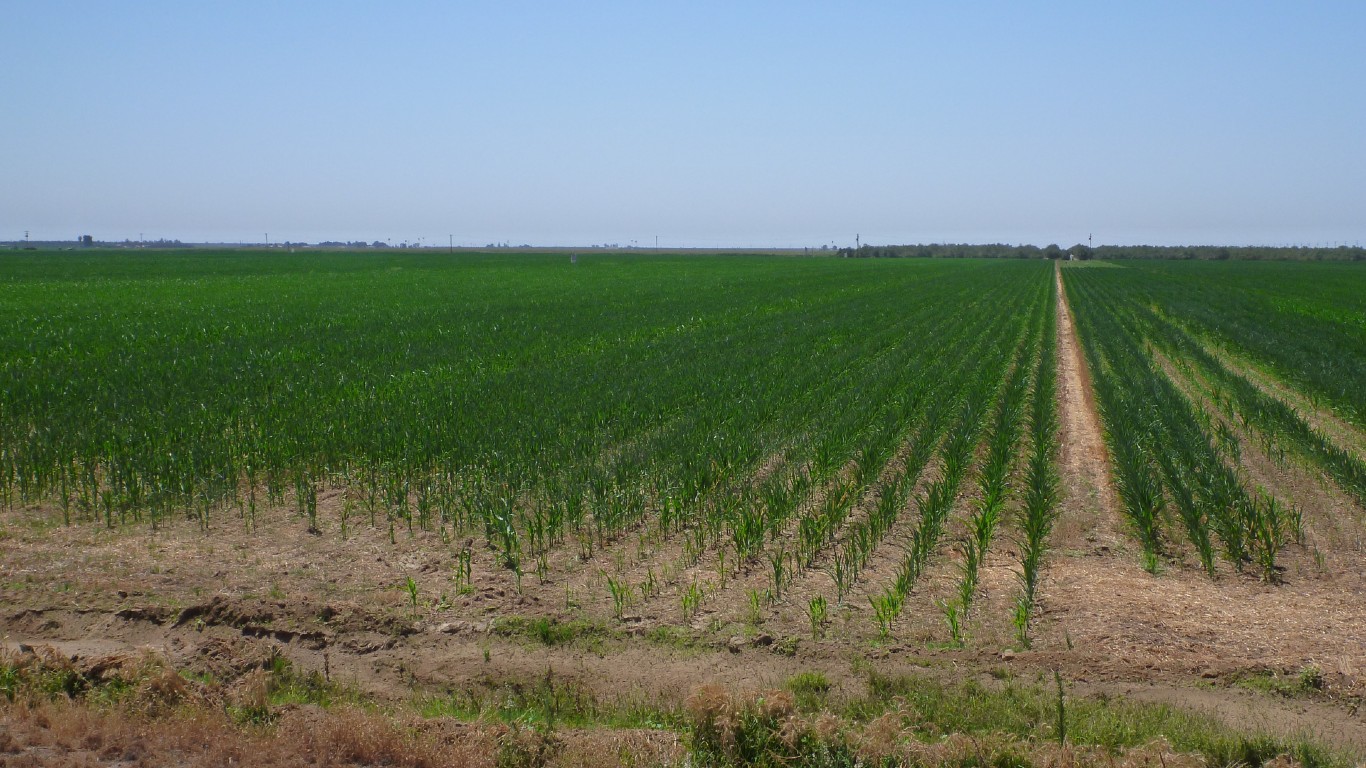
13. Strathmore, California
> Poverty rate in 2019: 60.1% — #303 out of 29,320 places
> Median household income in 2019: $25,500 — #26,223 out of 29,320 places
> Adults with a bachelor’s degree in 2019: 6.4% — #25,459 out of 29,320 places
> Total adult population in 2019: 3,033
12. Niland, California
> Poverty rate in 2019: 60.1% — #303 out of 29,320 places
> Median household income in 2019: $21,330 — #26,763 out of 29,320 places
> Adults with a bachelor’s degree in 2019: 0.0% — #27,746 out of 29,320 places
> Total adult population in 2019: 631
[in-text-ad-2]
11. Thoreau, New Mexico
> Poverty rate in 2019: 61.1% — #285 out of 29,320 places
> Median household income in 2019: $19,792 — #26,879 out of 29,320 places
> Adults with a bachelor’s degree in 2019: 4.3% — #26,609 out of 29,320 places
> Total adult population in 2019: 1,641
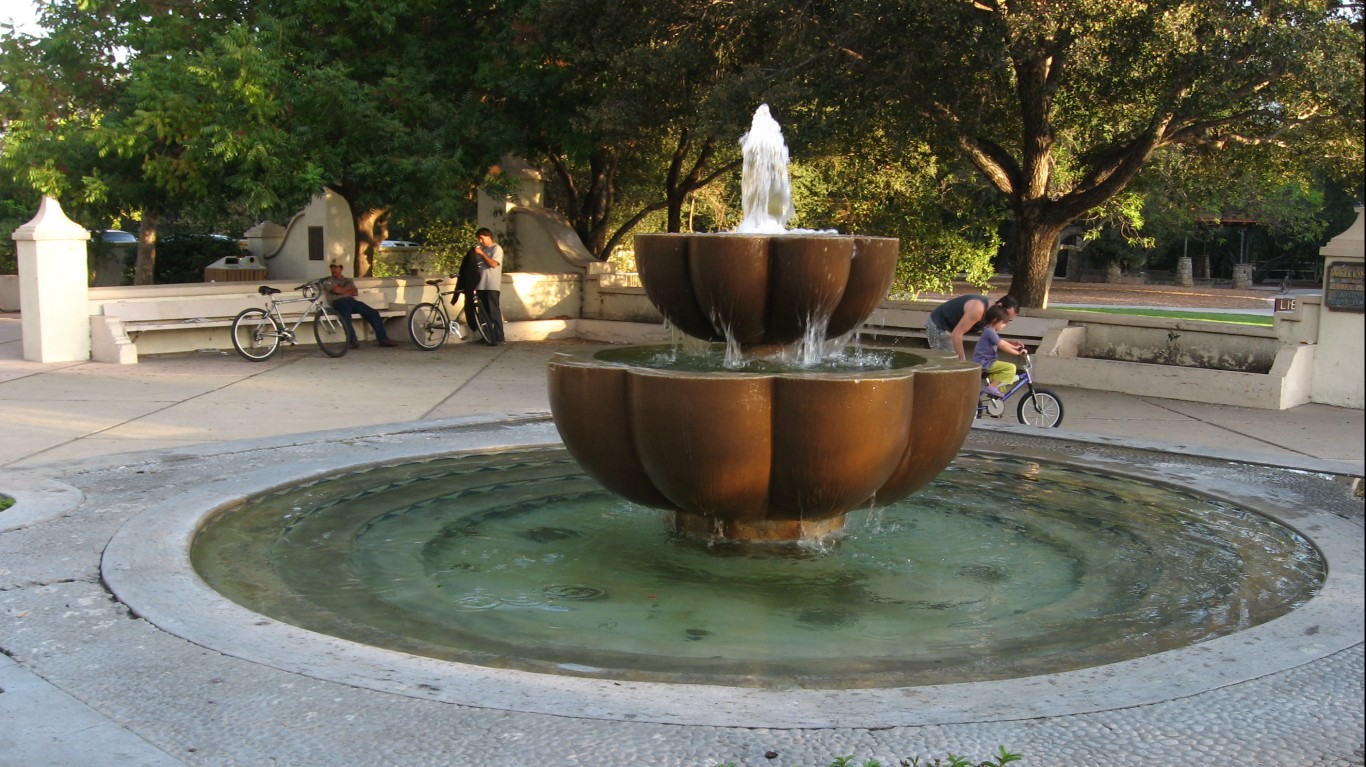
10. Ventura, New Mexico
> Poverty rate in 2019: 62.2% — #270 out of 29,320 places
> Median household income in 2019: $00 — #00 out of 29,320 places
> Adults with a bachelor’s degree in 2019: 16.1% — #16,253 out of 29,320 places
> Total adult population in 2019: 714
[in-text-ad]
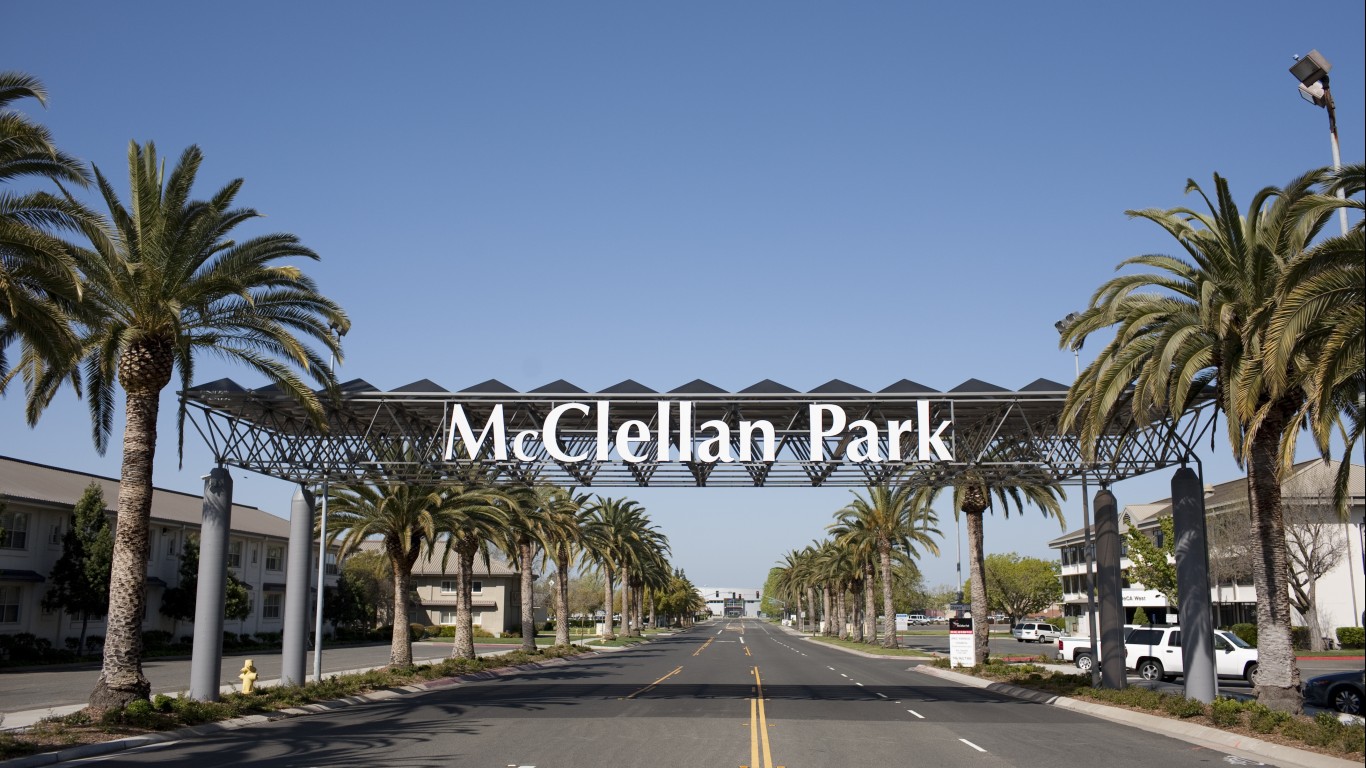
9. McClellan Park, California
> Poverty rate in 2019: 62.5% — #263 out of 29,320 places
> Median household income in 2019: $21,591 — #26,740 out of 29,320 places
> Adults with a bachelor’s degree in 2019: 19.9% — #12,709 out of 29,320 places
> Total adult population in 2019: 1,046
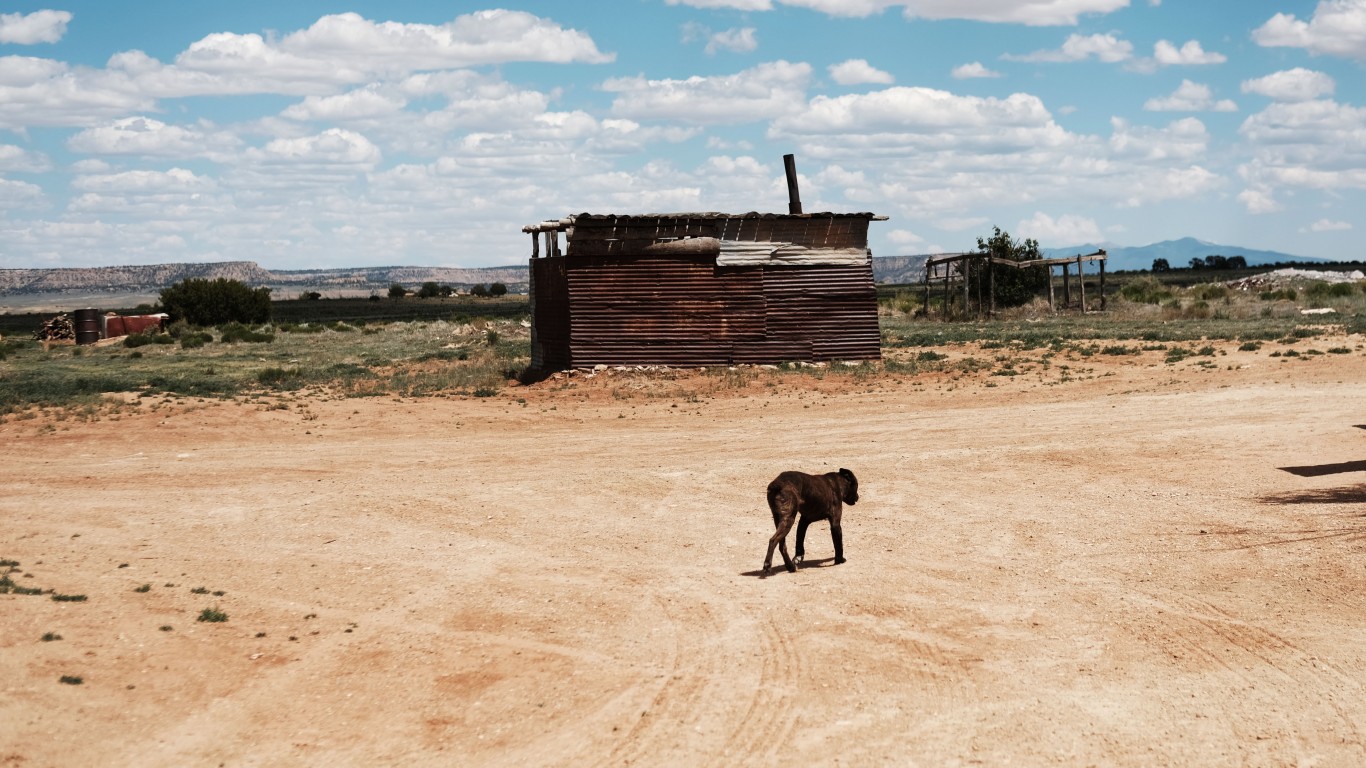
8. Navajo, New Mexico
> Poverty rate in 2019: 63.0% — #258 out of 29,320 places
> Median household income in 2019: $21,500 — #26,746 out of 29,320 places
> Adults with a bachelor’s degree in 2019: 3.8% — #26,860 out of 29,320 places
> Total adult population in 2019: 1,450
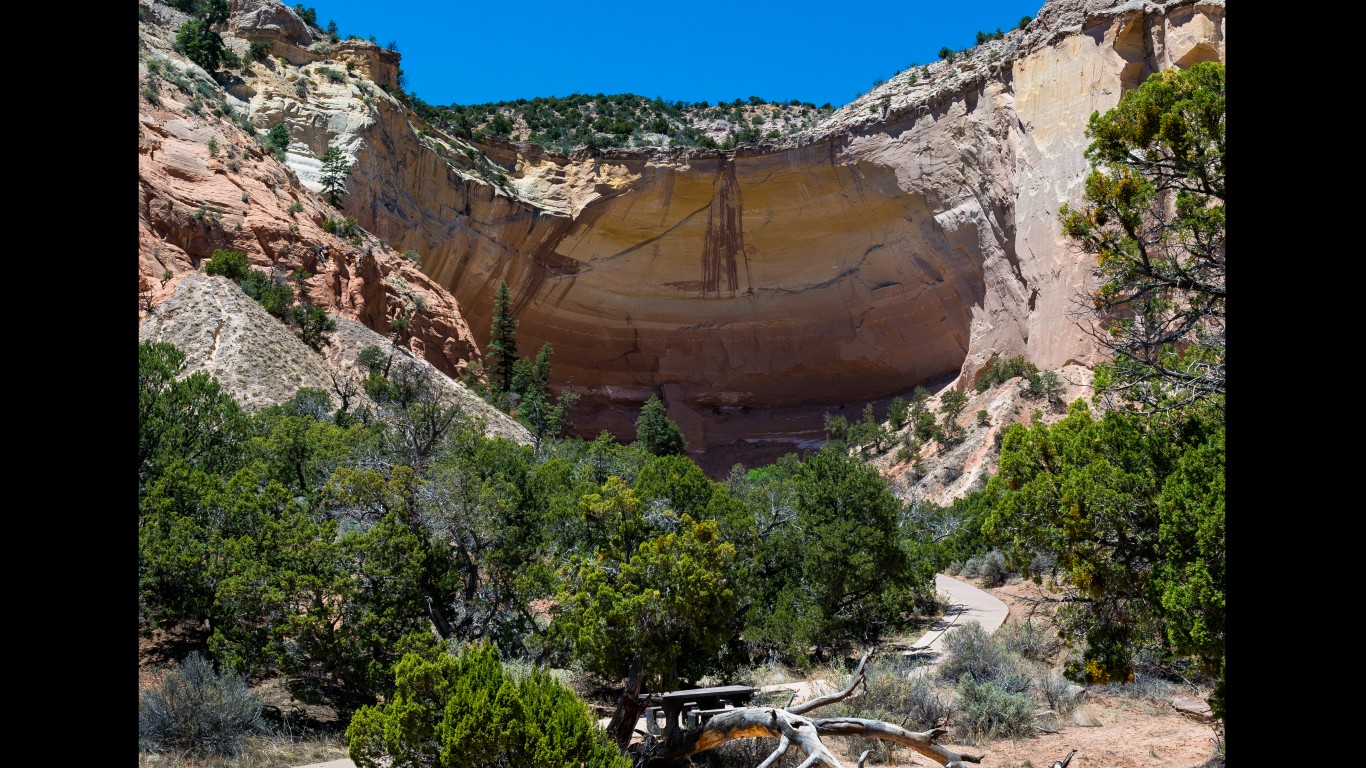
7. Tierra Amarilla, New Mexico
> Poverty rate in 2019: 63.6% — #248 out of 29,320 places
> Median household income in 2019: Not applicable
> Adults with a bachelor’s degree in 2019: 10.6% — #21,919 out of 29,320 places
> Total adult population in 2019: 784
[in-text-ad-2]
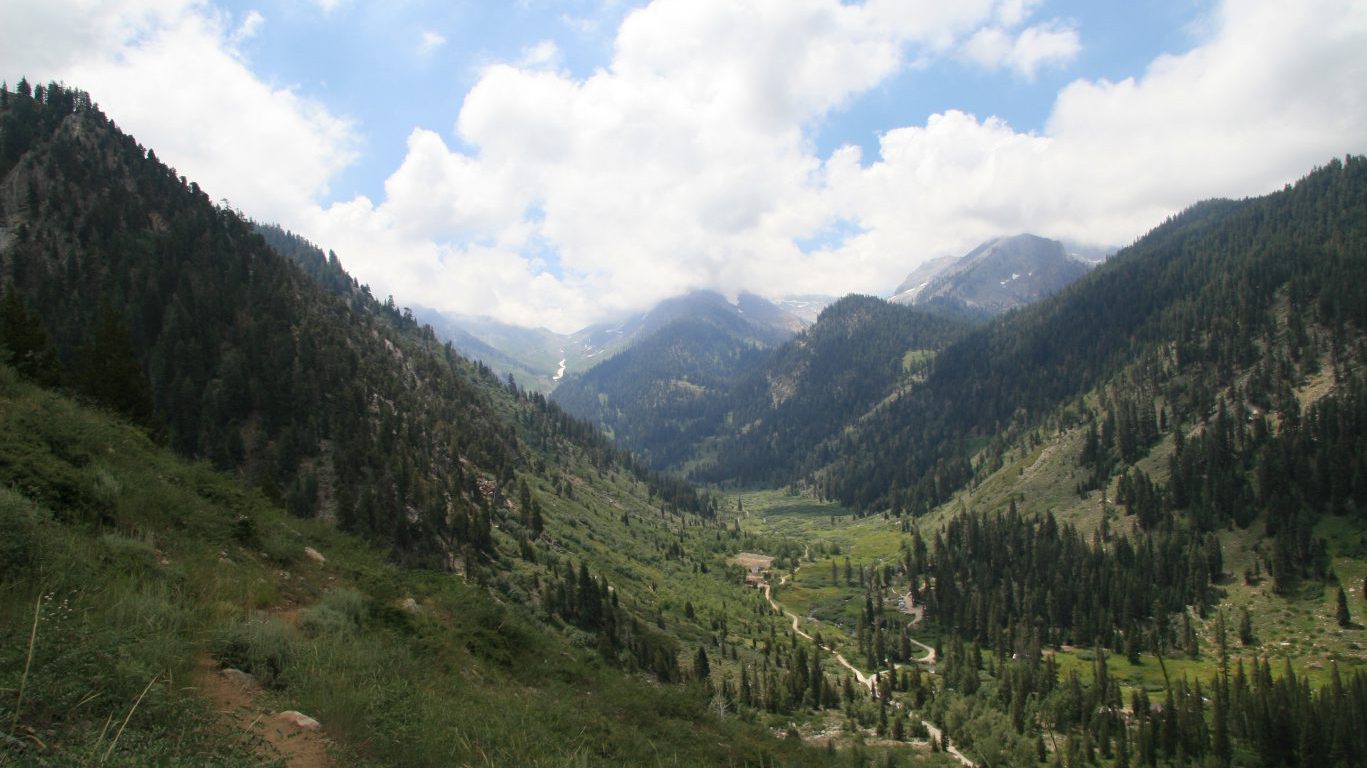
6. Plainview, California
> Poverty rate in 2019: 64.8% — #232 out of 29,320 places
> Median household income in 2019: $20,556 — #26,833 out of 29,320 places
> Adults with a bachelor’s degree in 2019: 1.7% — #27,560 out of 29,320 places
> Total adult population in 2019: 887
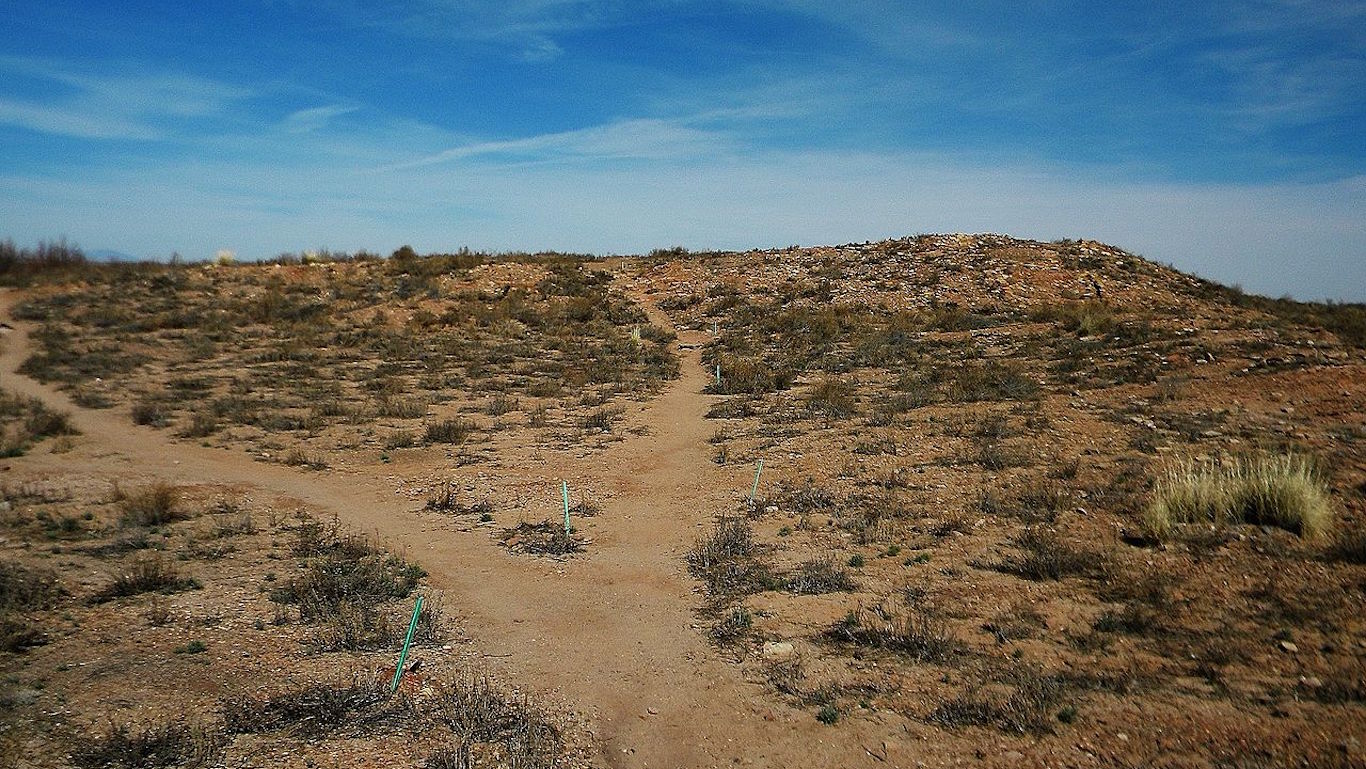
5. Whitecone, Arizona
> Poverty rate in 2019: 65.4% — #220 out of 29,320 places
> Median household income in 2019: $17,344 — #27,000 out of 29,320 places
> Adults with a bachelor’s degree in 2019: 1.8% — #27,534 out of 29,320 places
> Total adult population in 2019: 871
[in-text-ad]
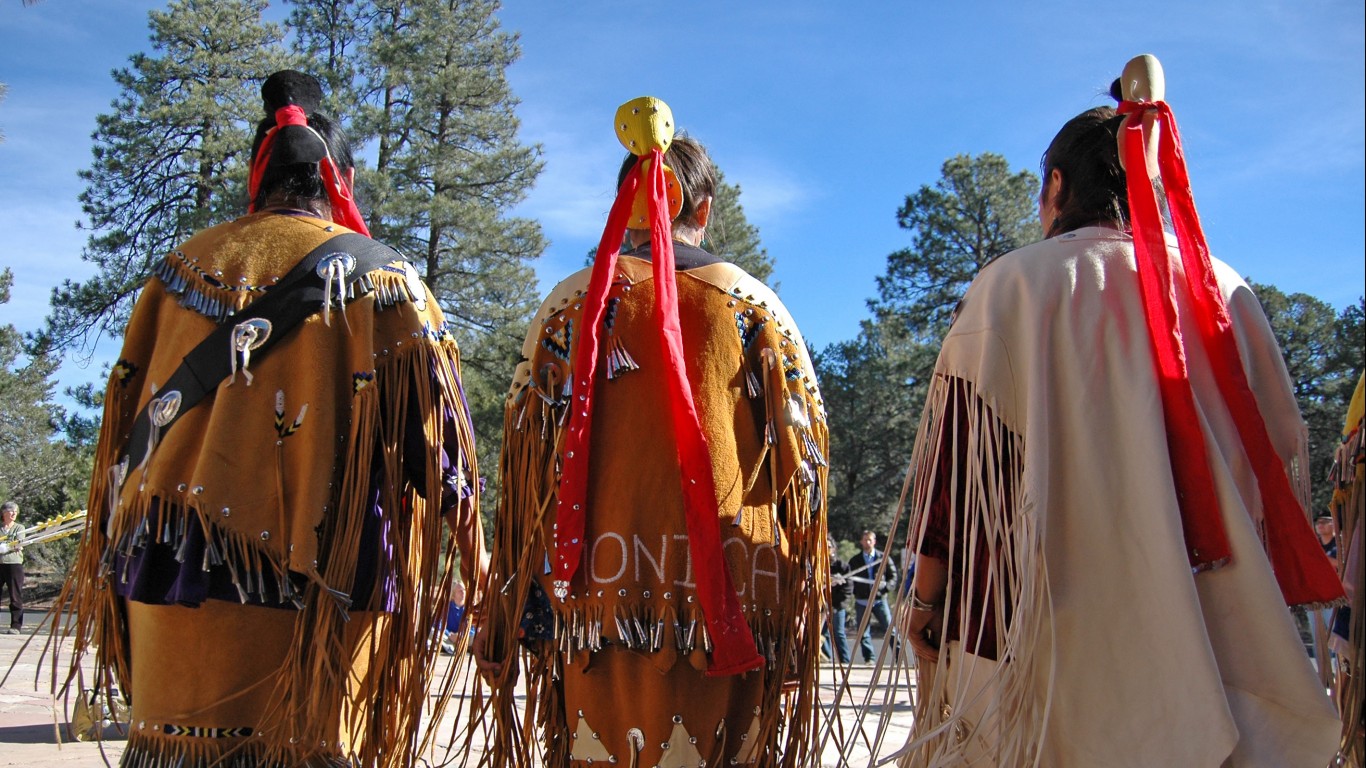
4. Cibecue, Arizona
> Poverty rate in 2019: 66.1% — #210 out of 29,320 places
> Median household income in 2019: $15,417 — #27,069 out of 29,320 places
> Adults with a bachelor’s degree in 2019: 2.6% — #27,313 out of 29,320 places
> Total adult population in 2019: 2,173
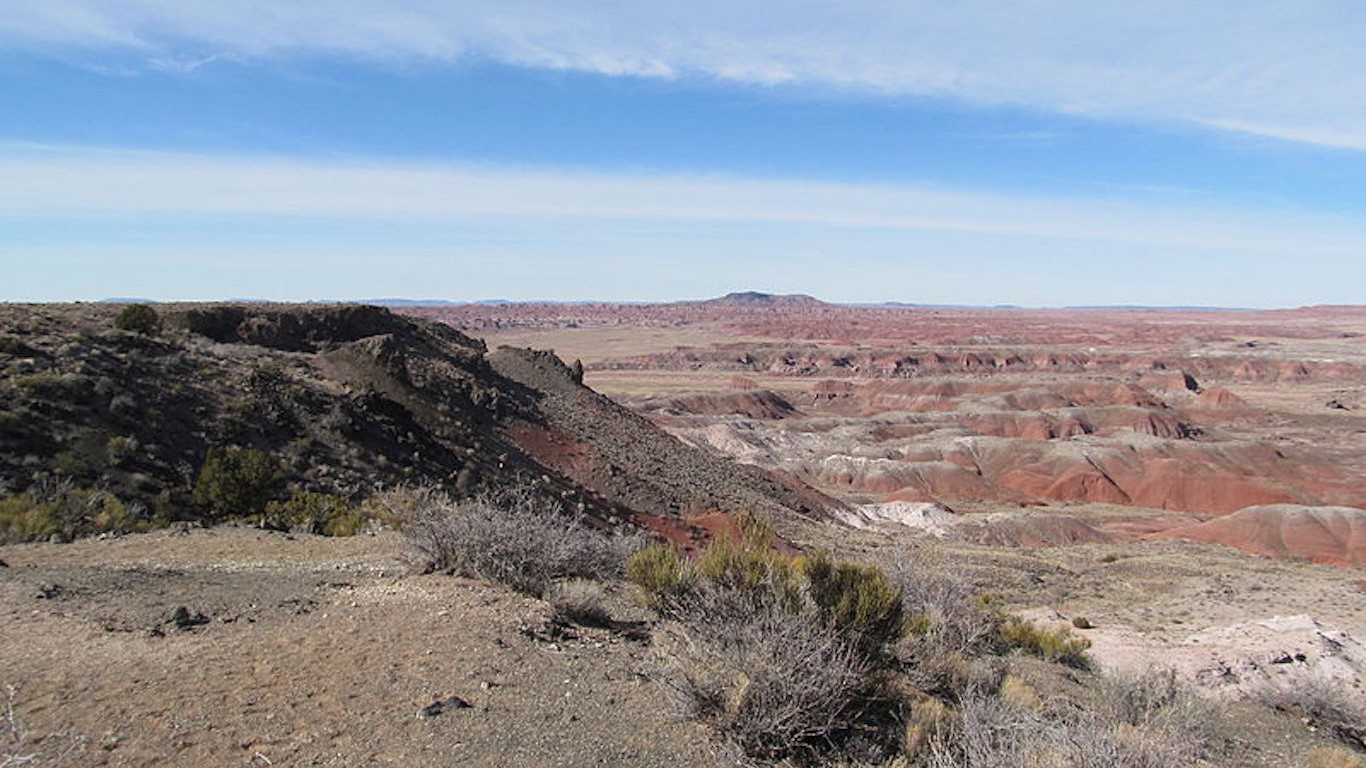
3. Nazlini, Arizona
> Poverty rate in 2019: 67.4% — #194 out of 29,320 places
> Median household income in 2019: $9,542 — #27,132 out of 29,320 places
> Adults with a bachelor’s degree in 2019: 9.3% — #23,200 out of 29,320 places
> Total adult population in 2019: 522
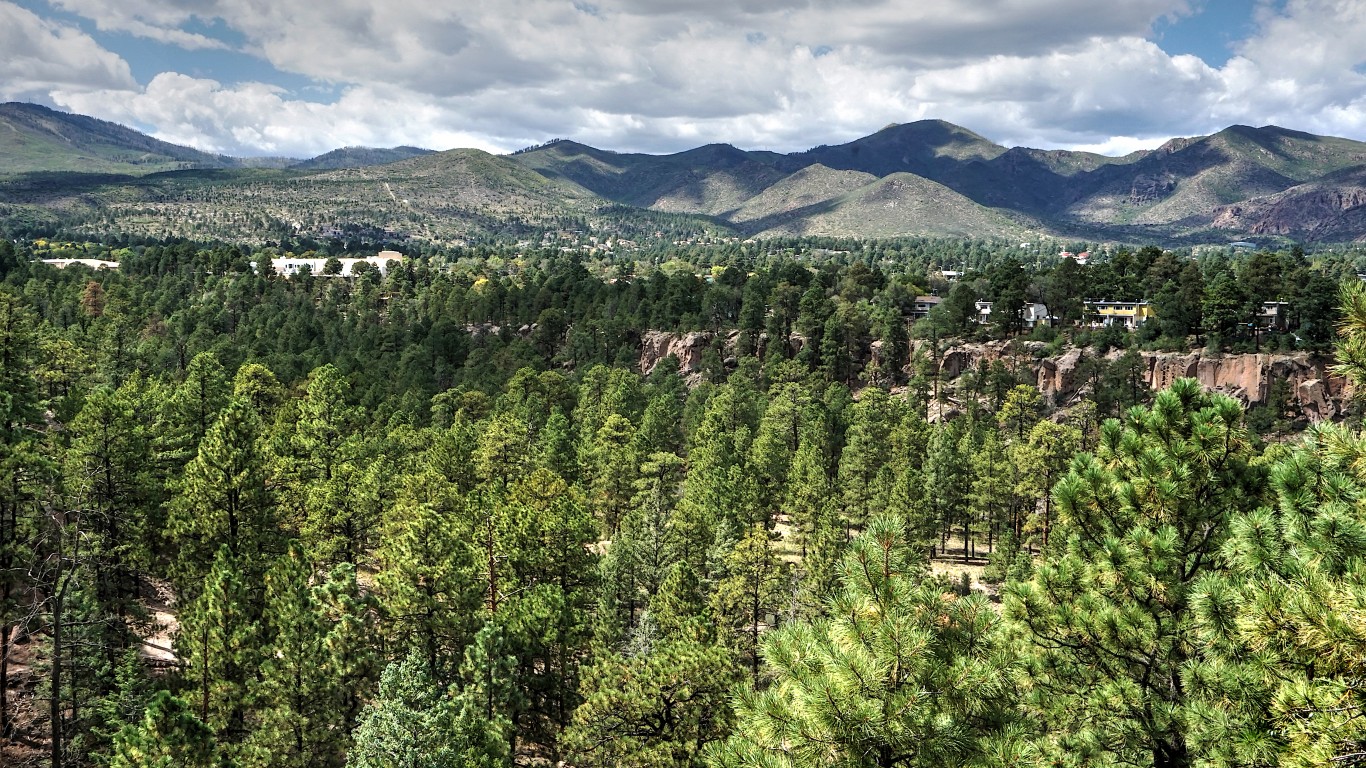
2. Alamo, New Mexico
> Poverty rate in 2019: 78.1% — #123 out of 29,320 places
> Median household income in 2019: $19,615 — #26,893 out of 29,320 places
> Adults with a bachelor’s degree in 2019: 3.1% — #27,151 out of 29,320 places
> Total adult population in 2019: 851
[in-text-ad-2]
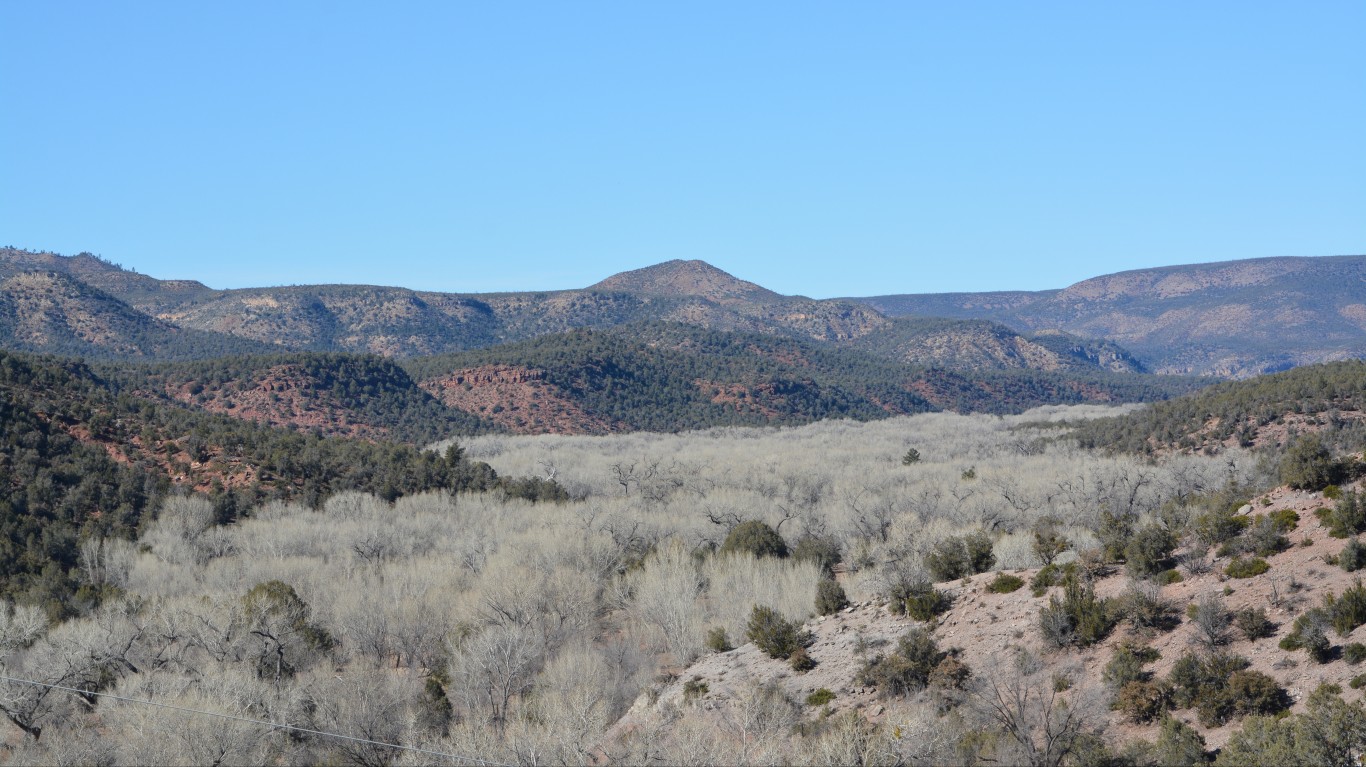
1. Round Valley, Arizona
> Poverty rate in 2019: 81.8% — #100 out of 29,320 places
> Median household income in 2019: $20,673 — #26,823 out of 29,320 places
> Adults with a bachelor’s degree in 2019: 10.0% — #22,506 out of 29,320 places
> Total adult population in 2019: 754
Get Ready To Retire (Sponsored)
Start by taking a quick retirement quiz from SmartAsset that will match you with up to 3 financial advisors that serve your area and beyond in 5 minutes, or less.
Each advisor has been vetted by SmartAsset and is held to a fiduciary standard to act in your best interests.
Here’s how it works:
1. Answer SmartAsset advisor match quiz
2. Review your pre-screened matches at your leisure. Check out the advisors’ profiles.
3. Speak with advisors at no cost to you. Have an introductory call on the phone or introduction in person and choose whom to work with in the future
Thank you for reading! Have some feedback for us?
Contact the 24/7 Wall St. editorial team.
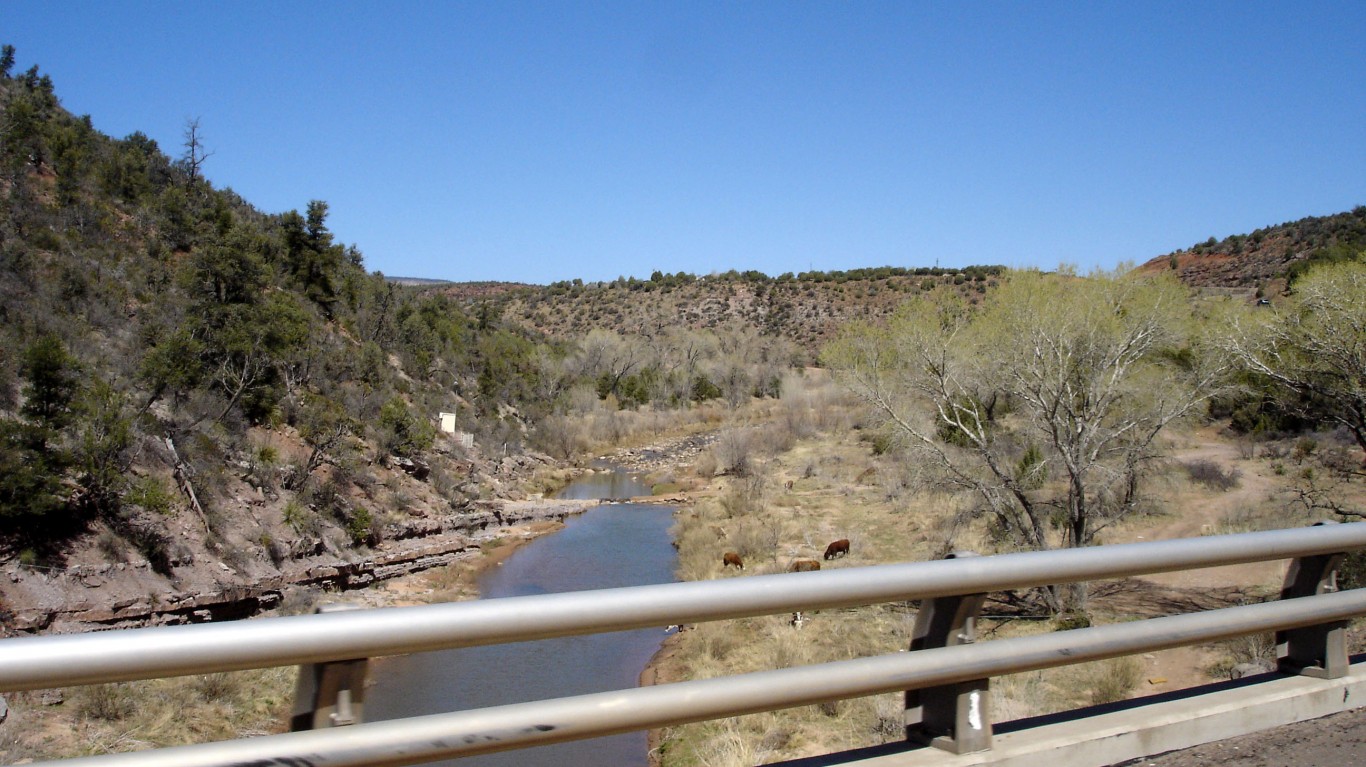
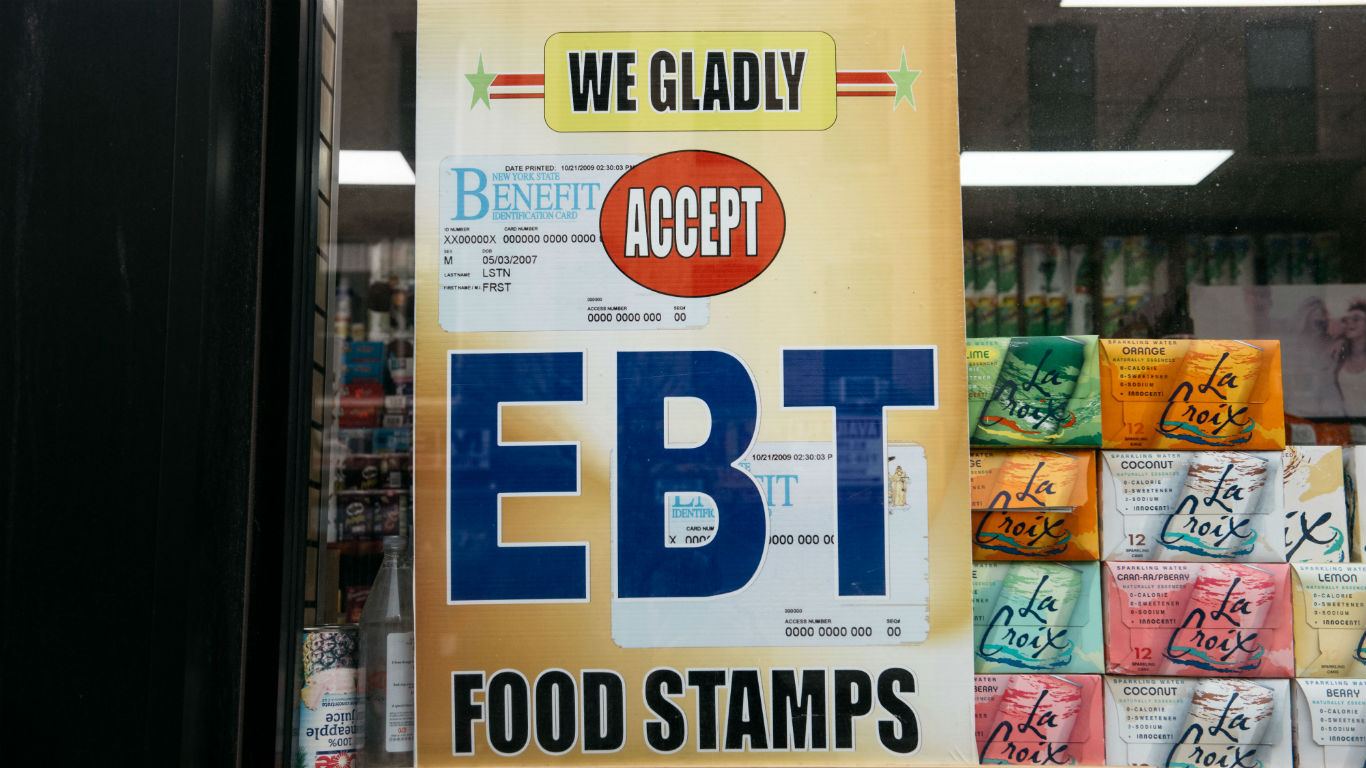 24/7 Wall St.
24/7 Wall St.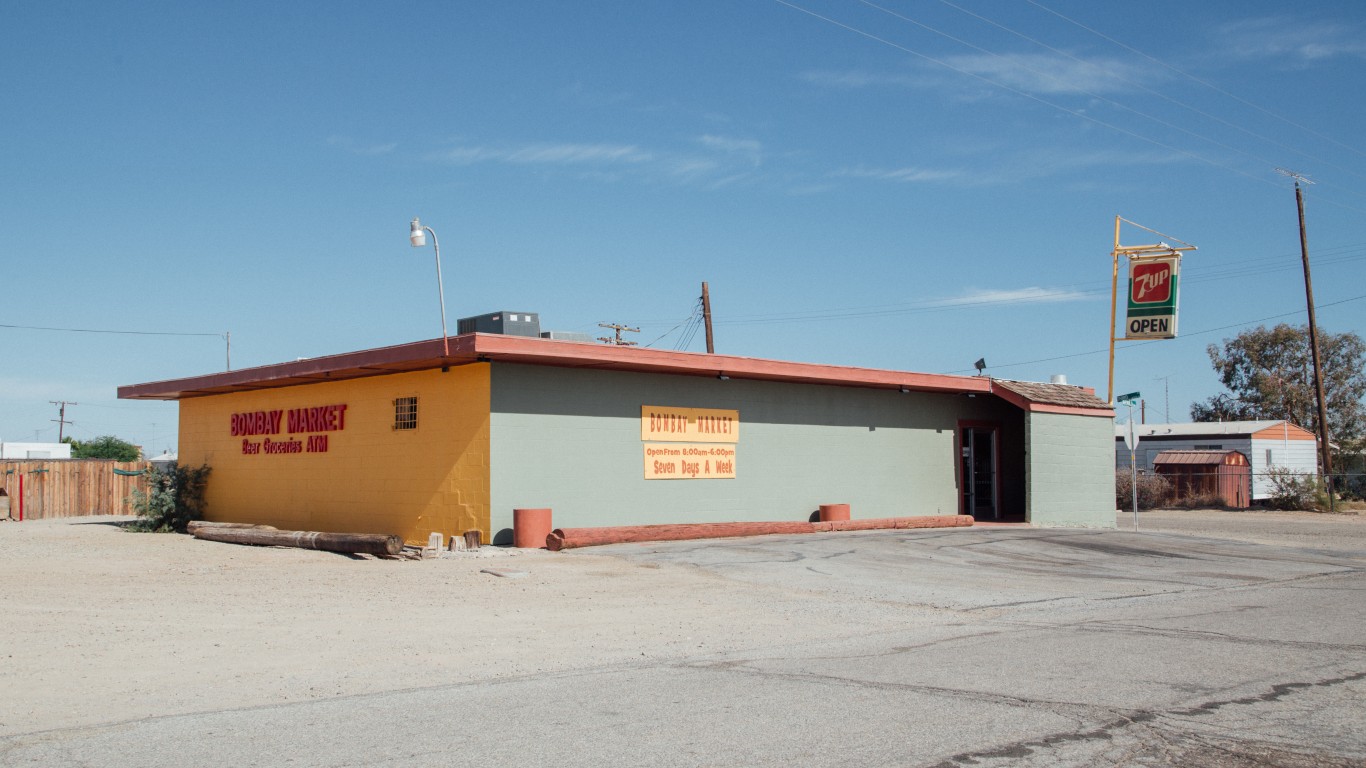
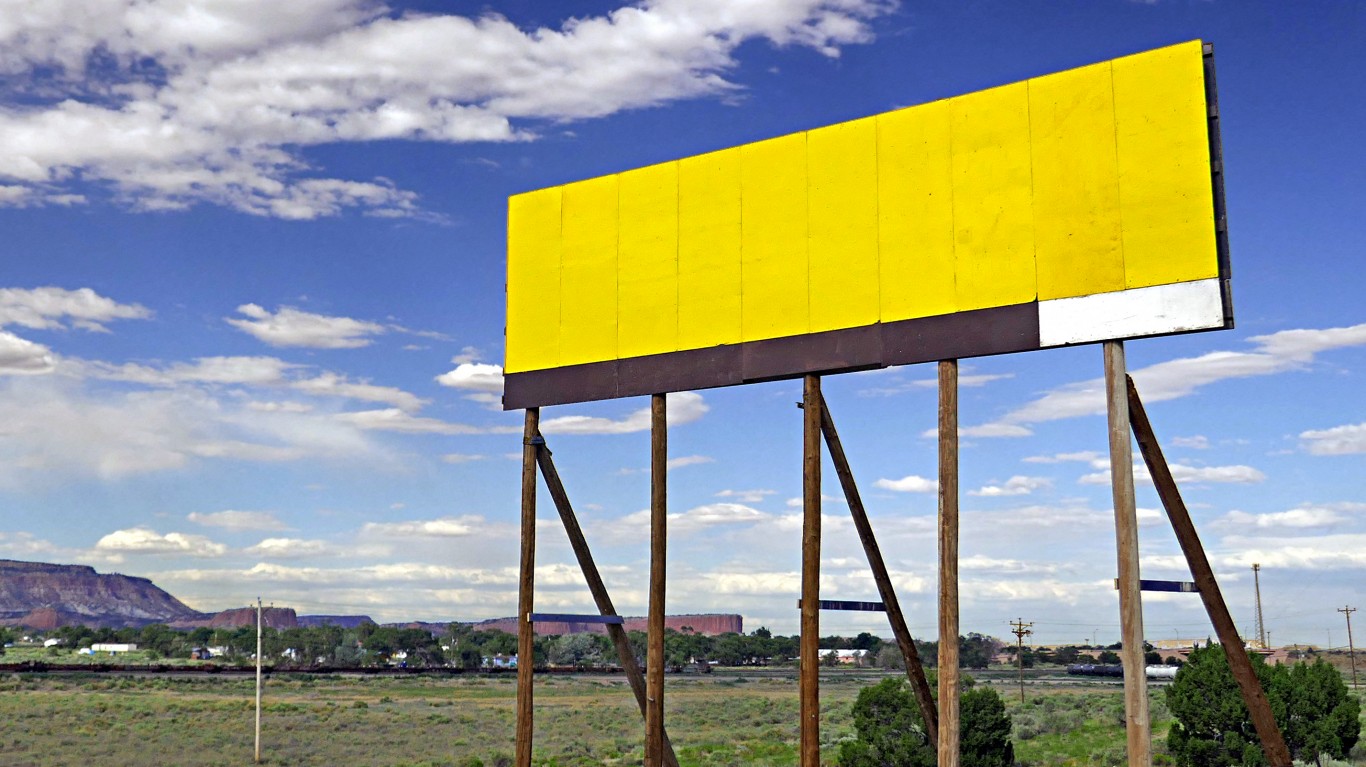
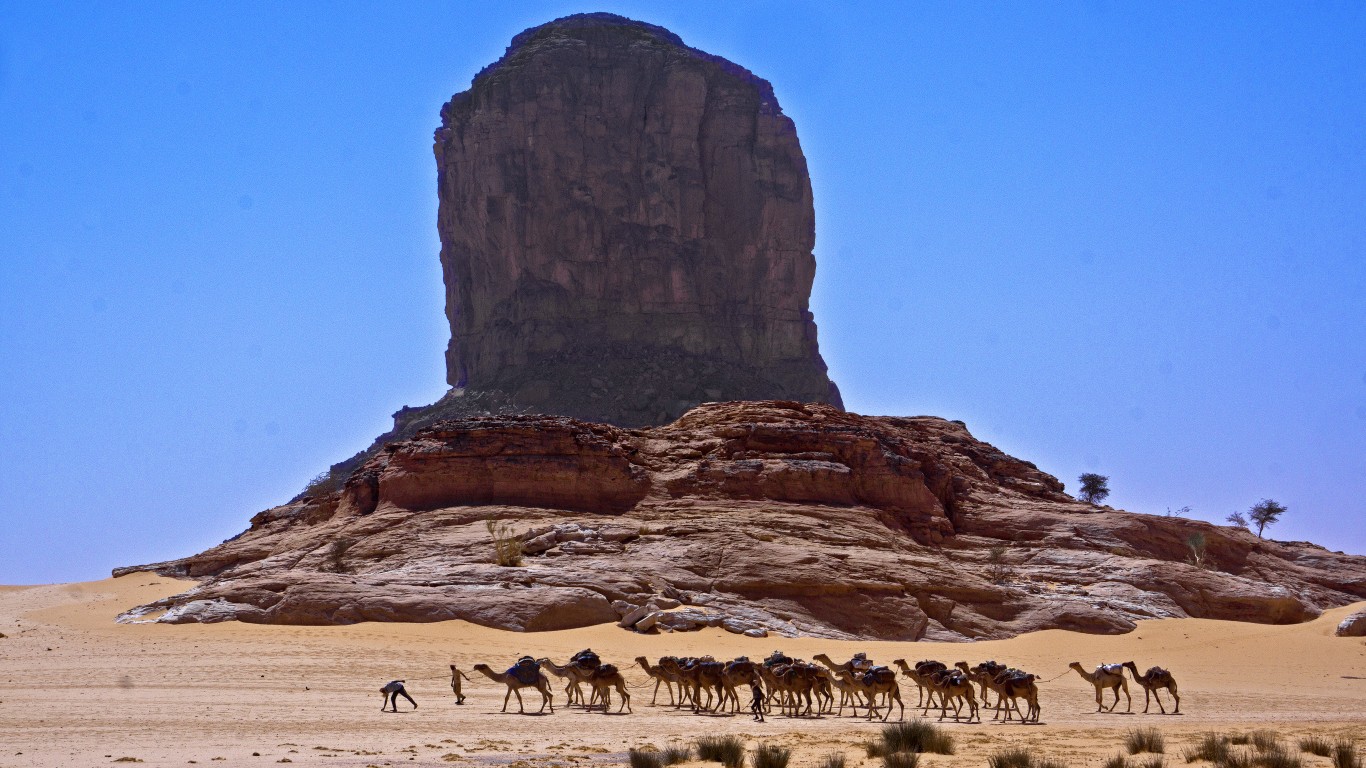 24/7 Wall St.
24/7 Wall St.